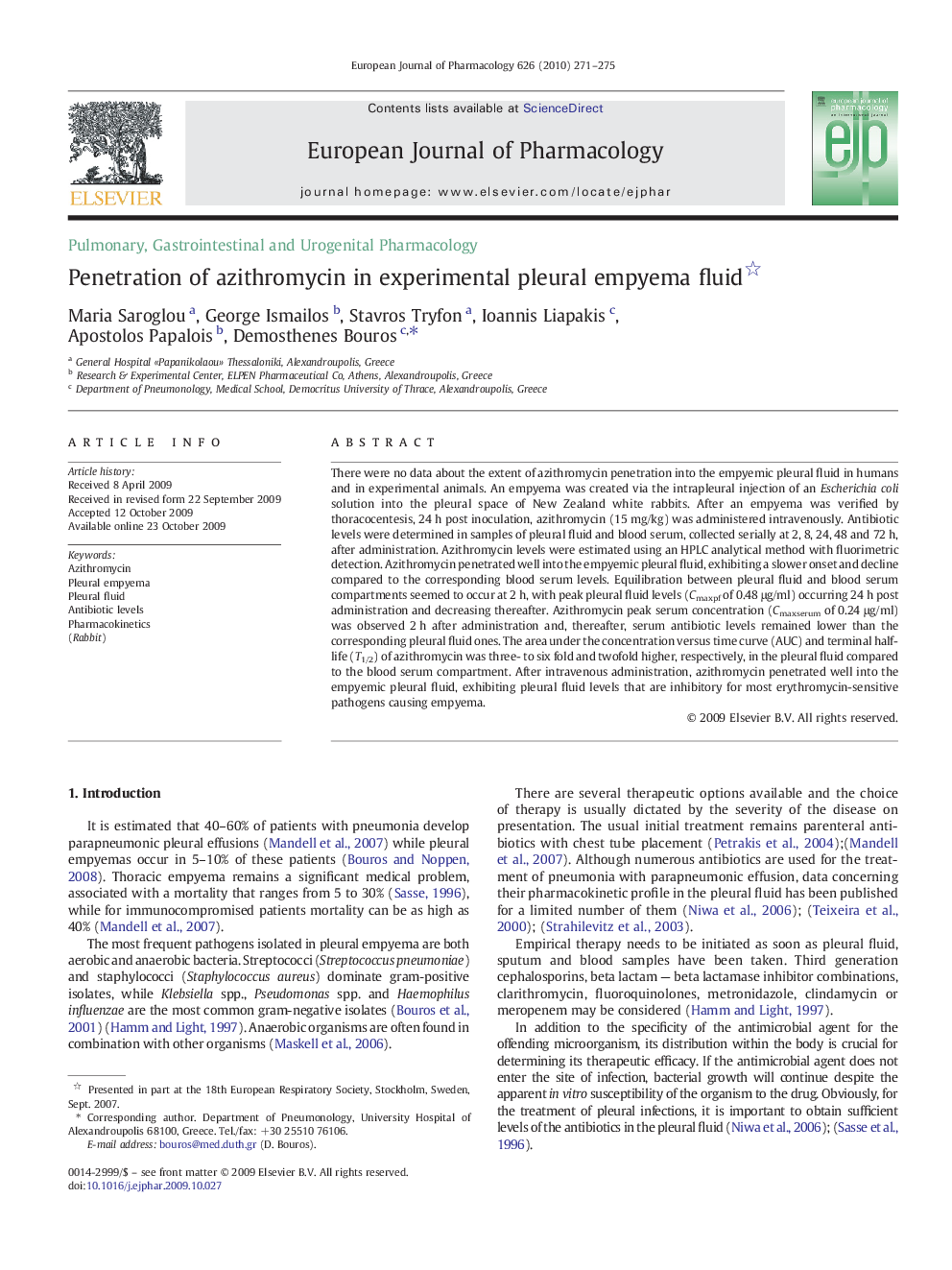| Article ID | Journal | Published Year | Pages | File Type |
|---|---|---|---|---|
| 2533866 | European Journal of Pharmacology | 2010 | 5 Pages |
There were no data about the extent of azithromycin penetration into the empyemic pleural fluid in humans and in experimental animals. An empyema was created via the intrapleural injection of an Escherichia coli solution into the pleural space of New Zealand white rabbits. After an empyema was verified by thoracocentesis, 24 h post inoculation, azithromycin (15 mg/kg) was administered intravenously. Antibiotic levels were determined in samples of pleural fluid and blood serum, collected serially at 2, 8, 24, 48 and 72 h, after administration. Azithromycin levels were estimated using an HPLC analytical method with fluorimetric detection. Azithromycin penetrated well into the empyemic pleural fluid, exhibiting a slower onset and decline compared to the corresponding blood serum levels. Equilibration between pleural fluid and blood serum compartments seemed to occur at 2 h, with peak pleural fluid levels (Cmaxpf of 0.48 μg/ml) occurring 24 h post administration and decreasing thereafter. Azithromycin peak serum concentration (Cmaxserum of 0.24 μg/ml) was observed 2 h after administration and, thereafter, serum antibiotic levels remained lower than the corresponding pleural fluid ones. The area under the concentration versus time curve (AUC) and terminal half-life (T1/2) of azithromycin was three- to six fold and twofold higher, respectively, in the pleural fluid compared to the blood serum compartment. After intravenous administration, azithromycin penetrated well into the empyemic pleural fluid, exhibiting pleural fluid levels that are inhibitory for most erythromycin-sensitive pathogens causing empyema.
